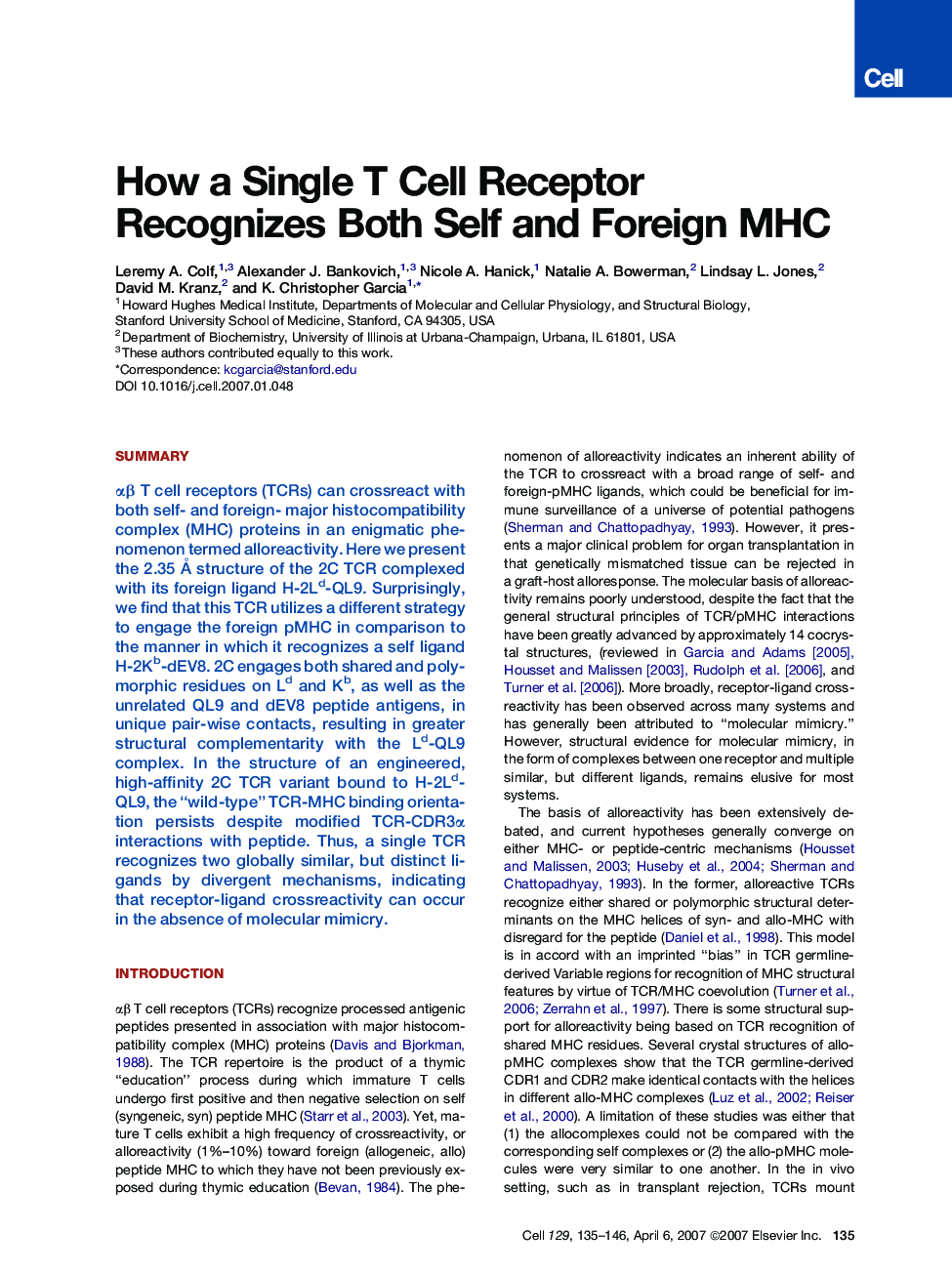| Article ID | Journal | Published Year | Pages | File Type |
|---|---|---|---|---|
| 2038355 | Cell | 2007 | 12 Pages |
Summaryαβ T cell receptors (TCRs) can crossreact with both self- and foreign- major histocompatibility complex (MHC) proteins in an enigmatic phenomenon termed alloreactivity. Here we present the 2.35 Å structure of the 2C TCR complexed with its foreign ligand H-2Ld-QL9. Surprisingly, we find that this TCR utilizes a different strategy to engage the foreign pMHC in comparison to the manner in which it recognizes a self ligand H-2Kb-dEV8. 2C engages both shared and polymorphic residues on Ld and Kb, as well as the unrelated QL9 and dEV8 peptide antigens, in unique pair-wise contacts, resulting in greater structural complementarity with the Ld-QL9 complex. In the structure of an engineered, high-affinity 2C TCR variant bound to H-2Ld-QL9, the “wild-type” TCR-MHC binding orientation persists despite modified TCR-CDR3α interactions with peptide. Thus, a single TCR recognizes two globally similar, but distinct ligands by divergent mechanisms, indicating that receptor-ligand crossreactivity can occur in the absence of molecular mimicry.
